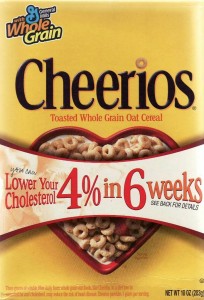On Monday this week, Michael Taylor began his new job as special assistant to the FDA Commissioner for food safety. He will be in charge of implementing whatever food safety laws Congress finally decides to pass.
I know that what I am about to say will surprise, if not shock, many of you, but I think he’s an excellent choice for this job. Yes, I know he worked for Monsanto, not only once (indirectly) but twice (directly). And yes, he’s the first person whose name is mentioned when anyone talks about the “revolving door” between the food industry and government. And yes, he signed off on the FDA’s consumer-unfriendly policies on labeling genetically modified foods.
But before you decide that I must have drunk the Kool Aid on this one, hear me out. He really is a good choice for this job. Why? Because he managed to get USDA to institute HACCP (science-based food safety regulations) for meat and poultry against the full opposition of the meat industry — a truly heroic accomplishment. His position on food safety has been strong and consistent for years. He favors a single food agency, HACCP for all foods, and accountability and enforcement. We need this for FDA-regulated foods (we also need enforcement for USDA-regulated foods, but he won’t be able to touch that unless Congress says so). So he’s the person most likely to be able to get decent regulations in place and get them enforced.
I say this in full knowledge of his history. In the 1990s, Mr. Taylor held positions in both FDA and USDA and his career in these agencies is complicated. As I explained in my 2003 book, Safe Food (see the endnotes for full documentation), Mr. Taylor began his career as a lawyer with the FDA. When he left the FDA, he went to work for King & Spalding, a law firm that represented Monsanto, the company that developed genetically engineered bovine growth hormone (BGH), corn, and soybeans.
He revolved back to the FDA in 1991 as deputy commissioner for policy, and he held that position during the time the agency approved Monsanto’s BGH. At the time of the review, he had been with FDA for more than two years. This made him exempt from newly passed conflict-of-interest guidelines that applied only to the first year of federal employment. He also was a coauthor of the FDA’s 1992 policy statement on genetically engineered plant foods, and he signed the Federal Register notice stating that milk from cows treated with BGH did not have to be labeled as such.
For whatever it is worth, a 1999 lawsuit and GAO report revealed considerable disagreement about these decisions within FDA. These also revealed that Mr. Taylor had recused himself from matters related to Monsanto’s BGH and had “never sought to influence the thrust or content” of the agency’s policies on Monsanto’s products. I can’t tell whether there were ethical breaches here or not, but there is little question that his work at FDA gave the appearance of conflict of interest, if nothing more.
But wait! Watch what happened when he moved to USDA in 1994 as head of its Food Safety and Inspection Service (FSIS). Just six weeks after taking the job, Mr. Taylor gave his first public speech to an annual convention of the American Meat Institute. There, he announced that USDA would now be driven by public health goals as much or more than by productivity concerns. The USDA would soon require science-based HACCP systems in every meat and poultry plant, would be testing raw ground beef, and would require contaminated meat to be destroyed or reprocessed. And because E. coli O157.H7 is infectious at very low doses, the USDA would consider any level of contamination of ground beef with these bacteria to be unsafe, adulterated, and subject to enforcement action. Whew. This took real courage.
The amazing thing is that he actually made this work. Now, HACCP rules apply more to USDA-regulated products than to FDA-regulated products. This new appointment gives Mr. Taylor the chance to bring FDA’s policies in line with USDA’s and even more, to make sure they are monitored and enforced.
In Safe Food, I summarize Mr. Taylor’s position on food safety regulation from 2002. Then, he argued for, among other things:
- A single agency accountable for providing consistent and coordinated oversight of food safety, from farm to table.
- Institution of Pathogen Reduction: HACCP, with performance standards verified by pathogen testing, at every step of food production.
- Recall authority, access to records, and penalties for lapses in safety procedures.
- Standards for imported foods equivalent to those for domestic foods.
- Food safety to take precedence over commercial considerations in trade disputes.
Yes, he revolved back to Monsanto after leaving FDA but he didn’t stay long. He left Monsanto for Resources for the Future, a think tank on policy issues. In 2007, he went to academia and joined the food policy think tank (see his bio) at George Washington University. There, he produced the excellent food safety report I mentioned in a previous post, which repeats these points. This is about as good a position on food safety as can be expected of any federal official.
I wish him all the luck in the world in getting the safety of FDA-regulated foods under control. For those of you who are still dubious, how about giving him a chance to show what he can do? But do keep the pressure on – hold his feet to the fire – so he knows he has plenty of support for doing the right thing.
[Posted from Skagway, Alaska, en route to Fairbanks]



